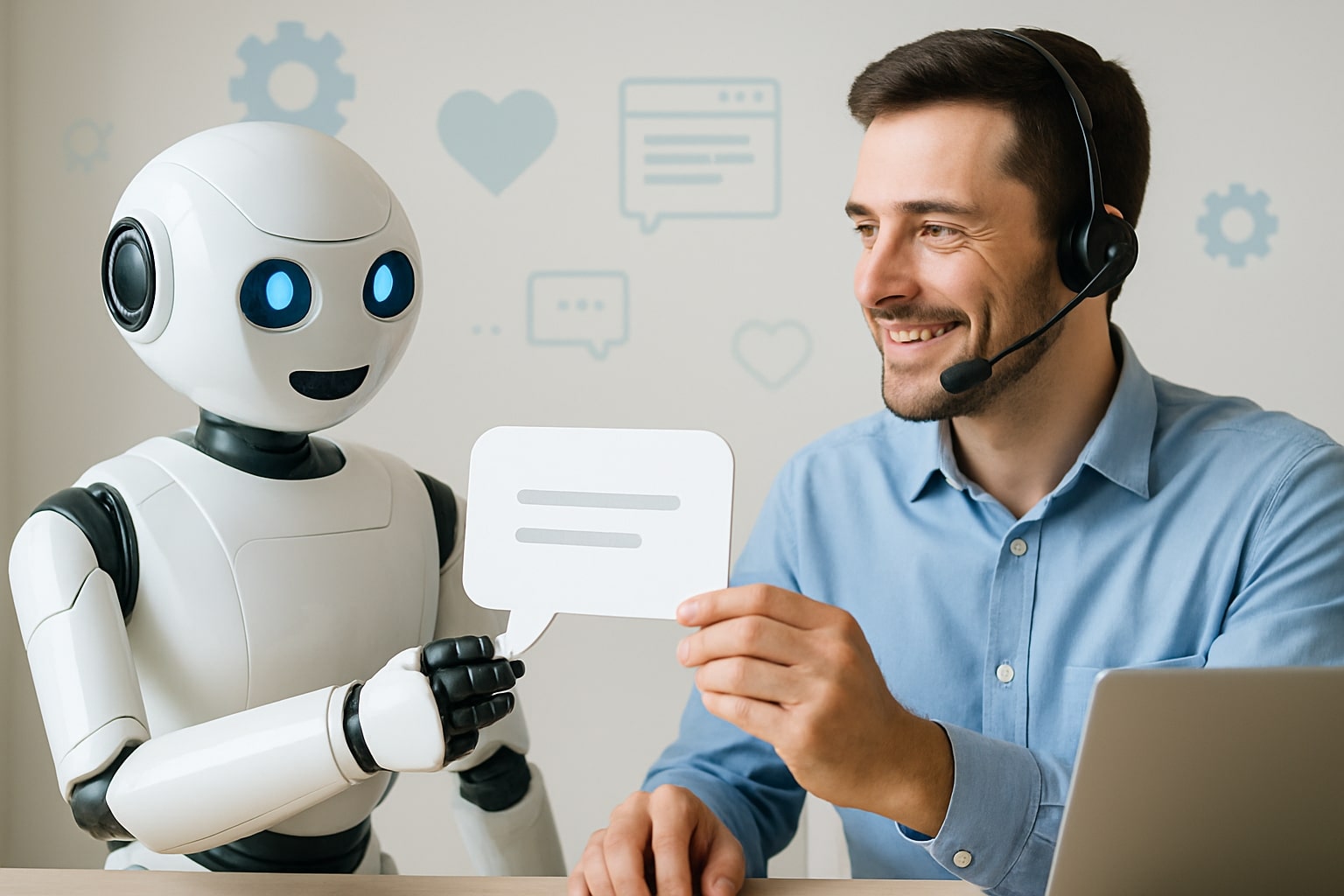
Customer expectations are changing rapidly. In today’s fast-paced, always-on world, people want immediate support, consistent answers, and 24/7 availability. Businesses, meanwhile, are trying to keep up with rising service demands while maintaining quality and reducing overhead. That’s where customer support automation steps in.
By automating customer service answers, businesses can streamline processes, answer frequent questions more quickly, and grow their operations without sacrificing the user experience. It's not as easy as just plugging in a chatbot, though. Intelligent automation involves building a smooth system that is natural, accurate, and personalized whether or not a human is involved.
Let’s walk through how to build and implement automated customer support that truly works.
Support automation isn’t about replacing humans. It’s about eliminating repetitive tasks and enabling your team to focus on high-impact interactions. Most businesses receive hundreds of the same types of inquiries every day—think shipping questions, return policies, account logins, or payment issues. Automating these responses reduces resolution time and increases customer satisfaction.
From a business standpoint, automation:
The right system can do all of this while still sounding human and helpful.
Before diving into tools or AI platforms, start by analyzing your current support channels. What are customers asking the most? Go through live chat transcripts, email inquiries, and ticketing logs. Categorize these into common support scenarios such as:
This first step helps you decide which responses should be automated and which should remain human-handled.
Once you know which issues are repetitive, the next task is to draft response templates. But don’t copy-paste FAQs into your automation system. Customers can tell when they’re getting robotic replies.
Well-crafted automated responses should:
Here’s an example:
Not-so-great automated response:
“Your return request has been received. Please wait 5–7 business days for processing.”
Better version:
“Hi! We’ve received your return request and it’s in queue for processing. Our team usually wraps things up within 5 to 7 business days. We’ll notify you as soon as your refund is issued!”
That small change in tone can make a big difference in how customers feel even when talking to a bot.
Automation doesn’t just happen with one tool. A full automation stack may involve AI chatbots, CRMs, ticketing systems, and live chat software that work together.
Key features to look for in a support automation platform:
It’s crucial to select a platform that’s scalable, easy to manage, and customizable to your business tone and support needs.
Support automation should feel intelligent, not forced. That’s why building smart workflows is so important. Set up triggers that guide the AI through a logical series of actions depending on what the customer says or does.
For example:
This level of flow design ensures customers don’t hit dead ends or go in circles with canned responses.
Nothing feels colder than a generic response. Personalization helps bridge the gap between automation and empathy.
Good support automation tools can access customer history and tailor replies accordingly. For instance:
Using names, recent actions, or loyalty status can turn a standard reply into a personalized customer experience.
Customer support automation isn’t a one-time project. It needs monitoring and refining as user needs evolve. Track how many conversations the bot handles, how often users escalate to live agents, and where confusion happens.
Use these insights to:
Regular audits and updates ensure your automation stays relevant and effective as your business scales.
Solution: Craft responses with warmth and clarity. Let customers know they can escalate to a human if needed.
Solution: Implement hybrid models where automation handles the basics and humans take over when empathy or advanced reasoning is needed.
Solution: Work with platforms that prioritize encryption, compliance (like GDPR), and secure data handling protocols.
AI is what transforms simple automation into intelligent interaction. Advanced AI agents can analyze tone, understand intent beyond keywords, and adapt responses in real-time.
Modern AI-powered agents can also:
This shift is already changing how businesses scale their support efforts without growing their teams.
If you’re looking to implement AI automation that doesn’t sacrifice human connection, PerfectCSR.ai is your go-to solution. Built with the latest advancements in conversational AI, PerfectCSR offers tools designed to elevate support experiences across industries.
Here’s how PerfectCSR stands apart:
PerfectCSR.ai helps businesses automate support while still sounding like their most helpful human rep. Whether you’re a startup or scaling enterprise, it’s a solution designed for growth, satisfaction, and customer retention.
Automation done wrong feels cold and robotic. But automation done right can feel like magic. It gives your customers faster answers, your team more breathing room, and your brand a reputation for responsive, smart service.
Support automation is no longer a competitive edge. It’s a necessity. And with tools like PerfectCSR.ai, businesses of all sizes can create seamless, human-like experiences that convert, retain, and delight.
Ready to elevate your customer support? Get started with PerfectCSR.ai today and build a smarter, friendlier support journey for your customers.
What is automated customer support?
Automated customer support refers to using software like chatbots, AI agents, or helpdesk automation tools to handle customer queries without human involvement, improving speed and efficiency.
How do I set up automated responses for customer support?
You can set up automated responses using AI chatbots, CRM tools, or ticketing systems by mapping out customer queries and creating relevant reply templates or logic-based workflows.
Which tools are best for automating customer service?
Popular tools include Zendesk, Intercom, Freshdesk, PerfectCSR AI, and HubSpot. These platforms allow automation of FAQs, ticket routing, live chat, and knowledge base integration.
Can automated customer support handle complex issues?
Yes, with AI advancements, platforms like PerfectCSR.ai use natural language understanding and sentiment analysis to resolve complex issues or escalate to human agents when needed.
Is automating customer support suitable for small businesses?
Absolutely. Automation reduces operational costs, boosts responsiveness, and helps small teams deliver enterprise-level support without hiring large support staff.